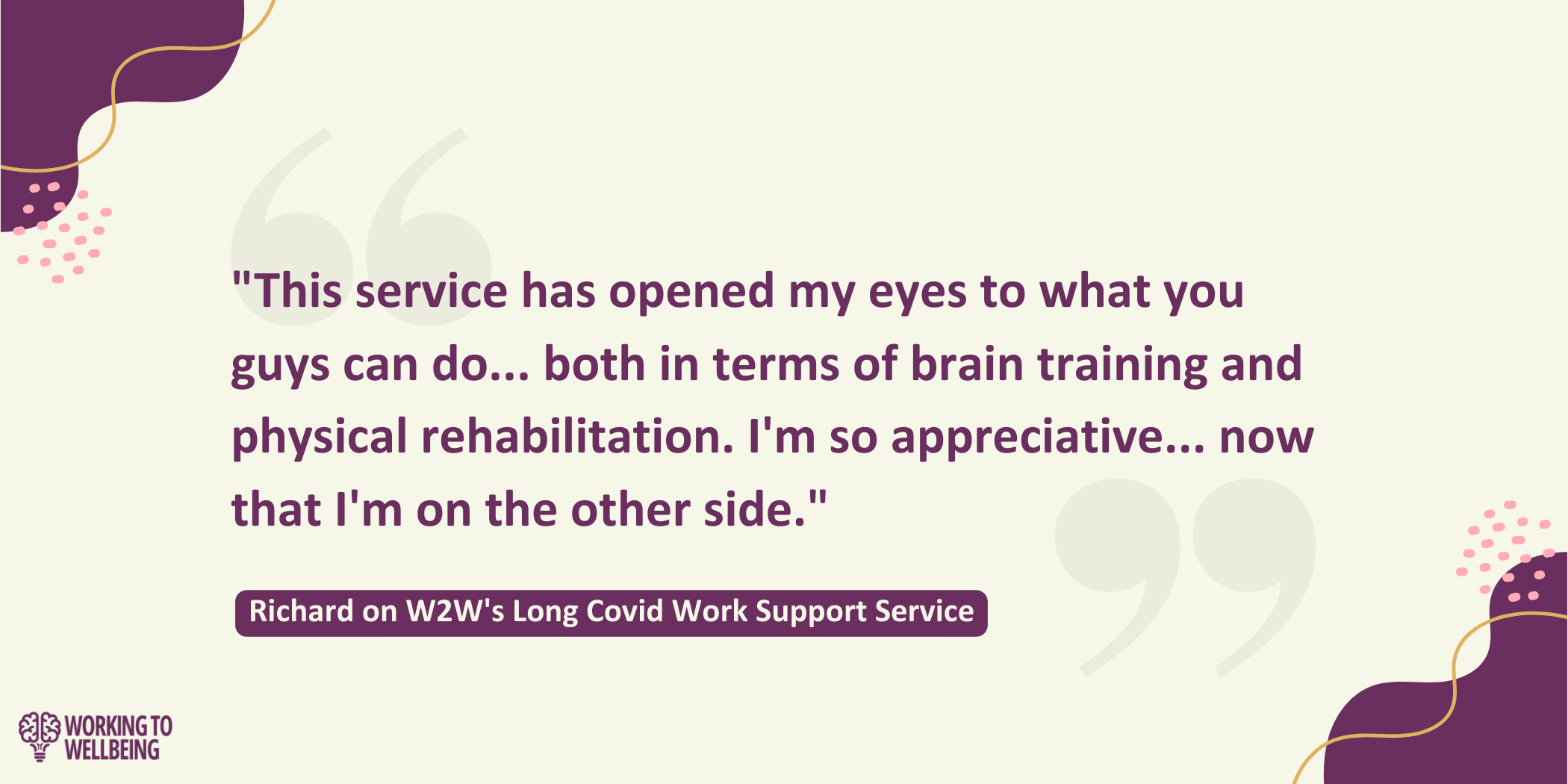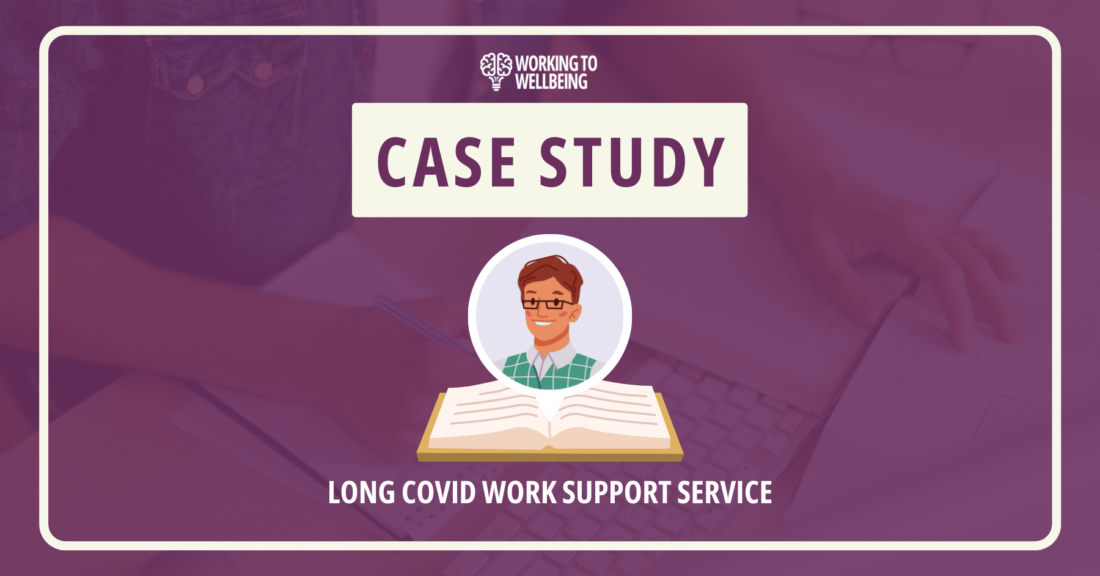Long Covid Work Support Service Case Study
Recognising the struggle
Richard, a 44-year-old man, living with his wife and four children, was working as a component design engineer when in April 2022 he contracted COVID-19. Initially he only experienced minor symptoms which he described as a ‘heavy cold’ and went back to life as ‘normal,’ even enjoying a holiday with his family. He then began to feel unwell again, experiencing significant fatigue, dizziness (likening his experience to being ‘on a boat’), muscle weakness and ‘pins and needles.’ Regardless, he put these symptoms down to his ongoing infection and attempted to return to work. Richard started working from home using his laptop, but after just 30 minutes, the shaking and muscle spasms in his hands and arms began to intensify. This was a wake-up call for him, as he was unable to finish his workday. He was consumed by symptoms such as severe physical/mental fatigue, lack of concentration, low mood, and significant functional limitations. He was referred to occupational health, who deemed him unfit to work at that time.
Reaching out for help
While off work and on the waiting list for the NHS long COVID service, he was referred by his insurance company to Working To Wellbeing (W2W) where he was paired with one of our clinical health and work coaches combined with physiotherapy support. These skilled clinicians used a biopsychosocial approach, in an individualised, integrated approach and tailoring treatment to correspond with his specific goals and values, including return to work plans.
Rapport-building and intervention
Through regular coaching sessions, it became apparent that Richard was a conscientious, diligent worker who was eager to return to work as soon as possible. This experience of chronic illness changed his lifestyle and identity in a profound way, impacting both his physical and mental health. He felt a ‘failure’ by not working and not contributing, especially considering he had a young family. He described feeling ‘useless’ and his mentality was one of ‘pure frustration.’ His analytical engineering mind put him under massive amounts of self-directed pressure to recover. He felt ‘guilt’ that his life had turned upside down.
During his coaching sessions he learned tools and techniques to manage his fatigue more efficiently and to give himself permission to heal and not feel guilty. His health and work coach helped him to see that he was ‘working’ towards his recovery, and that his rehabilitation was meaningful and worthwhile. This revelation was a major mindset shift for Richard and proved to be highly beneficial for him. This change in outlook aided his recovery and assisted him in adequately managing expectations for himself moving forward.
Adding a physiotherapist into the mix provided immeasurable benefits. After initial skepticism of a physiotherapy assessment over the phone, he garnered a great deal from this input. The W2W physiotherapist explored with him the root causes of his pain and numbness. She suggested strategies to improve grip, therapy and techniques to increase circulation and gave him real-life strategies to move more. His ‘homework’ entailed going for walks in the park and playing with his children: this suggestion was a direct result of Richard’s wish to play a bigger role in domestic life, thereby imbuing his rehabilitation with real-life, practical meaning.
Richard describes the rapport that he built with his W2W therapists as ‘fantastic’, and he found himself looking ‘forward to the calls’ as an act of self-care. Further, the virtual treatment over the phone allowed him to be candid and gave him the ability to talk freely as ‘part of the recovery’.
Work was always part of the coaching conversation, from initial assessment to going back to work, as a central part of his rehabilitation. It was not about pushing him back to work but recognising that work is a huge part of someone’s life and identity and also part of the rehabilitation process.

Results and recovery
The W2W interventions culminated in Richard feeling functionally prepared to return to work. Following advice from his OH advisor and his W2W clinicians, he began a phased return and gradually built up his hours over the space of several weeks. His RTW was not only successful, but – with his mood improved, his confidence increased, and his fatigue reduced to a manageable level – he was able to secure a new, more desirable position within the company. He started this new role full-time in January 2023. He continues to implement the tools and techniques learned through his time with W2W as a means of maintaining this much-improved quality of life.
Read more about W2W’s Long Covid Work Support Service by visiting the page here.


